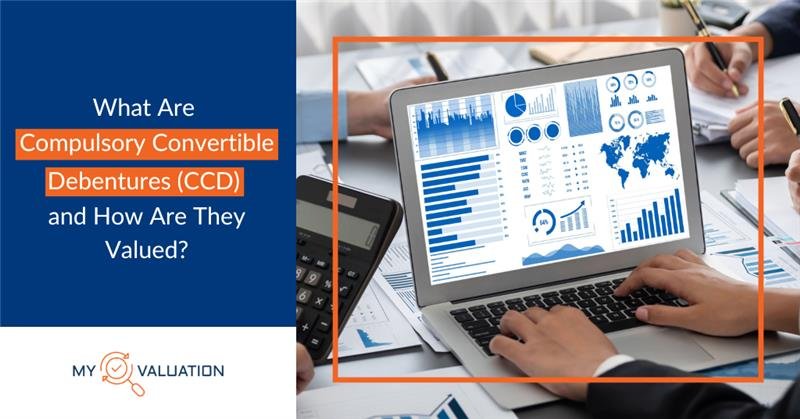Whether you're a business owner preparing for a sale, an investor evaluating opportunities, or a financial professional conducting valuations, getting the discount rate right can make or break your analysis.
A small change in this single number can swing your business valuation by millions of dollars.
Yet many people struggle to understand what it really means and how to calculate it properly.
You've probably heard terms like "cost of capital," "required return," or "hurdle rate" thrown around in financial discussions.
These all relate to the discount rate, but the jargon can make this concept seem more complicated than it actually is. The truth is, once you understand the fundamentals, discount rates become a powerful tool for making better financial decisions.
In this comprehensive guide, you'll learn everything you need to know about business valuation discount rates.
What is a Business Valuation Discount Rate?
In business valuation, the discount rate represents the minimum return you'd expect to earn for taking on the risk of investing in a particular business.
It's essentially your answer to this question: "What rate of return do I need to make this investment worthwhile given all the risks involved?"
The discount rate essentially captures two key elements: the time value of money and risk.
The time value of money reflects the fact that a dollar today is worth more than a dollar tomorrow – even without any risk involved. The risk component reflects the uncertainty that you'll actually receive those future cash flows as expected.
Different types of investments require different discount rates. A stable, profitable business with predictable cash flows might warrant a lower discount rate, while a startup in a volatile industry would require a much higher one.
The riskier the investment, the higher the discount rate you'll apply, and consequently, the lower the present value of those future cash flows.
In practical terms, when you're valuing a business, you'll use the discount rate to convert all projected future cash flows into their present value equivalents. Add up all these present values, and you get the enterprise value of the business.
It's that straightforward – though as you'll see, calculating the right discount rate requires careful consideration of multiple factors.
Importance of Discount Rate in Business Valuation
Components of the Discount Rate
Understanding what goes into a discount rate is like understanding the ingredients in a recipe – each component serves a specific purpose, and together they create the final result.
Let's break down these building blocks so you can see exactly what you're working with.
1. The Risk-Free Rate
Every discount rate starts with the risk-free rate, which represents the return you could earn with virtually no risk. In the US, this is typically the yield on Treasury bonds.
The risk-free rate reflects two fundamental economic factors: inflation expectations and the real return on money.
When inflation is expected to rise, Treasury yields increase to compensate investors for the declining purchasing power of their future payments.
2. Market Risk Premium
Next, you add the market risk premium, which compensates you for the general risk of investing in the stock market rather than risk-free bonds.
Historical data shows that stocks typically outperform bonds over long periods, but they're also more volatile.
This extra return – usually around 4-6% in the US – is your reward for accepting that uncertainty.
3. Size Premium
If you're valuing a smaller company, you'll often add a size premium.
Research consistently shows that smaller companies are riskier investments than large, established corporations. They have less access to capital, fewer resources to weather storms, and higher failure rates.
Depending on the company's size, this premium might range from 1% to 5% or more.
4.Company-Specific Risk Premium
This is where your analysis gets specific to the individual business.
You're looking at factors that make this particular company riskier than others in its peer group. Maybe it's heavily dependent on a single customer, operates in a declining industry, has weak management, or faces significant regulatory threats.
These company-specific risks might add anywhere from 1% to 10% to your discount rate.
5. Industry Risk Premium
Some industries are inherently riskier than others.
A utility company with regulated rates and predictable demand faces different risks than a biotech startup or a restaurant chain.
Technology companies might warrant higher premiums due to rapid obsolescence risks, while consumer staples might require lower premiums due to steady demand.
How to Calculate Discount Rate?
Now that you understand what goes into a discount rate, let's get practical.
1. Weighted Average Cost of Capital (WACC)
WACC is probably the most widely used method for calculating discount rates, and for good reason.
It's comprehensive, well-established, and relatively straightforward once you understand the logic.
The basic WACC formula looks like this: WACC = (E/V × Re) + (D/V × Rd × (1-T))
Here's what each piece means:
E = Market value of equity (stock)
D = Market value of debt
V = Total value (E + D)
Re = Cost of equity
Rd = Cost of debt
T = Tax rate
Let's say you're valuing a company with $60 million in equity, $40 million in debt, a 12% cost of equity, 6% cost of debt, and a 25% tax rate.
Your WACC would be: (60/100 × 12%) + (40/100 × 6% × (1-0.25)) = 7.2% + 1.8% = 9.0%.
WACC works best for companies with stable capital structures and when you're valuing the entire enterprise. It's the go-to method for most established businesses.
2. Adjusted Present Value (APV)
The APV method takes a different approach – it separates the value of the business operations from the value of its financing decisions.
Instead of blending everything together like WACC does, APV says "let's value the business as if it were all-equity financed, then separately add the benefits of debt financing."
Here's how APV works: APV = Unlevered firm value + Present value of financing side effects
Step 1: Calculate Unlevered Firm Value
First, you discount the company's free cash flows using the unlevered cost of equity (what the cost of equity would be if the company had no debt). This gives you the value of the business operations alone, without considering how it's financed.
Step 2: Add Financing Benefits
Next, you separately calculate and add the present value of financing benefits, primarily the tax shields from debt. Since interest payments are tax-deductible, debt financing creates value through tax savings.
When to Use APV
APV shines in situations where WACC becomes complicated or unreliable. This includes companies with changing capital structures, project financing, leveraged buyouts, or any situation where the financing strategy is expected to change significantly over time.
Choosing Between WACC and APV
For most standard business valuations involving established companies with stable financing, WACC is your best bet.
It's simpler, more widely understood, and gives reliable results. Use APV when you're dealing with complex financing situations or when the capital structure is expected to change materially over your projection period.
Both methods should theoretically give you the same answer when applied correctly to the same situation.
The choice often comes down to which method better fits your specific circumstances and which one you can apply more accurately given the information available.
How Interest Rates Affect Business Valuations
Interest rates and business valuations have an inverse relationship that's as predictable as gravity – when one goes up, the other goes down.
Understanding this connection is crucial because interest rate changes can dramatically impact your business valuation, often in ways that have nothing to do with the actual performance of the business itself.
As a business owner or investor, you can't control interest rates, but you can understand their impact on your valuations.
When rates are rising, it's particularly important to focus on near-term cash flow generation rather than distant promises of profitability. Businesses with strong current cash flows and low debt levels tend to weather rising rate environments better.
Conversely, when rates are falling, it might be an opportune time to pursue growth investments or consider acquisitions, as the lower discount rates make future cash flows more valuable in present terms.
Understanding this relationship helps you separate changes in business value that result from the company's performance versus changes that simply reflect the interest rate environment.
Conclusion
You now know the essential concepts of business valuation discount rates.
The key takeaway? Discount rates aren't just academic concepts – they're powerful tools that directly influence every major financial decision you'll make.
Whether you're planning an exit strategy, evaluating acquisition opportunities, or simply trying to understand what drives your business value, getting the discount rate right is absolutely critical.
Unfortunately, applying these concepts to real-world situations requires experience, market knowledge, and access to current data. Professional business valuations involve nuanced judgments about risk premiums, industry comparisons, and market conditions that can significantly impact your results.
That's where MyValuation comes in.
Our team of certified valuation professionals has helped hundreds of business owners, investors, and financial professionals navigate the complexities of discount rate calculations and business valuations. We combine deep technical expertise with real-world market experience to deliver accurate, defensible valuations that you can rely on for critical business decisions.
Whether you need a formal valuation for a transaction, want to understand your business's current worth, or are planning for future growth and exit strategies, we provide comprehensive valuation services tailored to your specific needs.
Ready to Get Started?
Book a consultation with our valuation experts today to discuss your specific situation and learn how professional valuation analysis can support your business goals.




